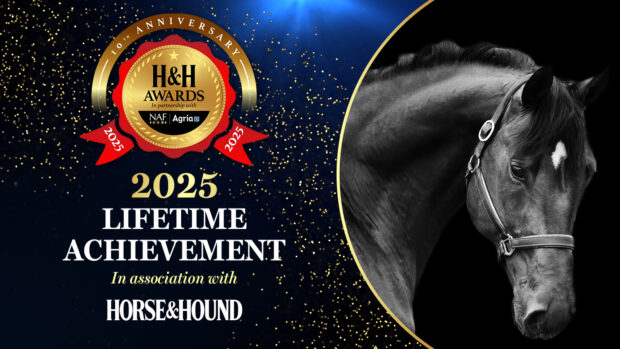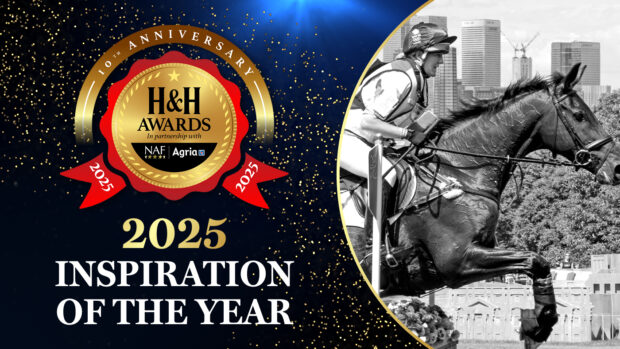When the late James Crossan bought a gelding at the 1964 Ballina Foal Fair in Co Mayo, little did he know that his purchase would become one of the most popular show jumpers ever to represent Britain.
The little brown foal, later named Pennwood Forge Mill, showed his ability early on. Crossan sold him and two others to Northern Irish dealer John McCaughey, who transported the home in a trailer.

When McCaughey and a border guard argued about how many horses he had on board, it transpired that “Forgie” had jumped out over the rear door some six miles back. He was retrieved but bored a scar on his shoulder all his life.
Forgie was sold as a potential hunter, but his wayward streak surfaced when he was being broken in no one could sit on him.
He was turned out, then offered to Wolverhampton dealer and owner of Penwood riding school, the late Fred Hartill.
Fred had bee to Kilrush Fair but still had space in his lorry. When asked if he would take a horse who was “bad to ride” for £130, Fred agreed.
No one ever knew Forgie’s breeding, though many had laid claim. Fred always recalled the day in 1973 when an Irish dealer at Royal Dublin Show told him: I know Fred Hartill very well, I found Forge Mill for him.
Fred handed him his business card and replied: “Please let him know when you find another one!”
Forgie undoubtedly had Irish Draught blood. He was extremely deep through the girth and had short, thick legs, giving an overall appearance of power. He also had a distinctive almost roman-nosed head.
In England Graham Terry had the dubious pleasure of breaking in the three-year-old. He was long-reining Forgie in the indoor school one day when another horse got loose. Forgie panicked, galloped off and “went into orbit” over a fence.
“If it takes two years to school him, we’ve got to do it,” said Fred Hartill afterwards.
Once Graham had pronounced Forgie rideable, the horse was sent to producer John Wrathall, who brought him on patiently and upgraded him to grade A.
“He was brilliant from the start 100% genuine and so kind”, recalled John.
Forgie really captured the public’s imagination after teaming up with Paddy McMahon who, despite his name, was born in Derbyshire, and whose only Irish connection is that one set of grandparents came from Dundalk.
Paddy had already had a three-year-stint at Pennwood. At the beginning of 1971, he asked Fred Hartill for his job back, and a legendary partnership was born.
At the start, Forgie put Paddy on the floor more than once. “His hindquarters were so powerful that he used to shoot me off. He would then look very surprised and peer down at me. I couldn’t be cross with him!” said Paddy.
After only a few shows, Paddy and Forgie were chosen for the British squad in Belgium, where they won the grand prix and jumped clear for the team. At that time, the BSJA’s policy was to send as many new names abroad as possible and among the three other first-timers was current British team manager Derek Ricketts.
Victories followed all over the world, but there was controversy when Forgie failed to make the 1972 Olympics. Fred Hartill had turned down an offer of £50,000 from a foreign buyer to keep the horse for Munich, but Forgie, who was still only an eight-year-old, did not jump as well as usual at the final trial at Hickstead.
Paddy and Forgie put their Hickstead gremlins to rest the following year. The European Championships were held at the Sussex venue and by the final individual leg, Forgie was in equal second place. Over a massive course, they had to go clear to take the title which they did in style.
They were now the most feted pair in Britain. Thousands joined the Forge Mill fan club, and, with show jumping then one of the most popular sports on television, Paddy attained “pop star” status. Strangers approached him wherever he went, asking after Forgie. Paddy also finished third in the BBC’s Sports Personality of the Year.
In 1977, Paddy set up his own yard. Although he asked to take Forgie with him, the Hartills decided to keep the horse, who was now a family pet. As he was still only 13, they toyed with the idea of sending Forgie to a top name before setline on Geoff Glazzard, who rode novices for Fred.
Although he had to be persuaded into taking the ride after modestly declaring himself “not good enough to do Forgie justice”, Geoff seized his opportunity and for the next two seasons the new pair competed with the best, securing numerous wins at top level.
But the strain of jumping the big courses began to take its toll, and Forgie was retired after the 1979 Royal International Horse Show. He began a new career making public appearances and meeting his fans from all over the world Fred even built and en suite bedroom for visitors to stay in.
Fred’s daughter, Valerie, rode Forgie every day until he died of colic a few years later.
Geoff Glazzard will never forget the horse that made his career.
“Forgie wasn’t built to jump, but he had such a big heart. He was an extraordinary horse and one of the true greats.



